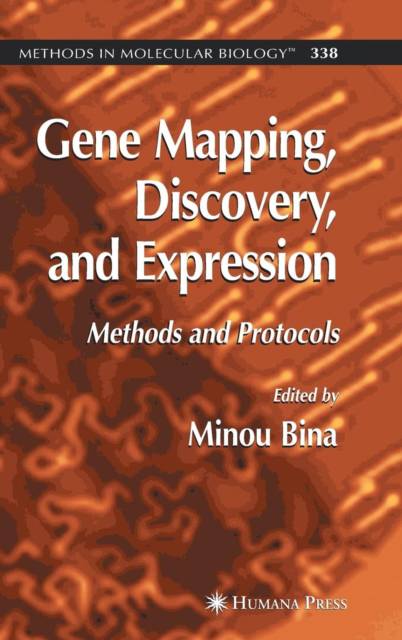
- Afhalen na 1 uur in een winkel met voorraad
- Gratis thuislevering in België vanaf € 30
- Ruim aanbod met 7 miljoen producten
- Afhalen na 1 uur in een winkel met voorraad
- Gratis thuislevering in België vanaf € 30
- Ruim aanbod met 7 miljoen producten
Zoeken
Gene Mapping, Discovery, and Expression
Methods and Protocols
€ 178,45
+ 356 punten
Omschrijving
Completion of the sequence of the human genome represents an unpar- leled achievement in the history of biology. The project has produced nearly complete, highly accurate, and comprehensive sequences of genomes of s- eral organisms including human, mouse, drosophila, and yeast. Furthermore, the development of high-throughput technologies has led to an explosion of projects to sequence the genomes of additional organisms including rat, chimp, dog, bee, chicken, and the list is expanding. The nearly completed draft of genomic sequences from numerous species has opened a new era of research in biology and in biomedical sciences. In keeping with the interdisciplinary nature of the new scientific era, the chapters in Gene Mapping, Discovery, and Expression: Methods and Protocols recapitulate the necessity of integration of experimental and computational tools for solving - portant research problems. The general underlying theme of this volume is DNA sequence-based technologies. At one level, the book highlights the importance of databases, genome-browsers, and web-based tools for data access and ana- sis. More specifically, sequencing projects routinely deposit their data in p- licly available databases including GenBank, at the National Center of Biotechnology (NCBI) in the United States; EMBL, maintained by the European Bioinformatics Institute; and DDBJ, the DNA Data Bank of Japan. Currently, several browsers offer facile access to numerous genomic DNA sequences for gene mapping and data retrieval.
Specificaties
Betrokkenen
- Uitgeverij:
Inhoud
- Aantal bladzijden:
- 334
- Taal:
- Engels
- Reeks:
- Reeksnummer:
- nr. 338
Eigenschappen
- Productcode (EAN):
- 9781588295750
- Verschijningsdatum:
- 1/04/2006
- Uitvoering:
- Hardcover
- Formaat:
- Genaaid
- Afmetingen:
- 160 mm x 234 mm
- Gewicht:
- 671 g

Alleen bij Standaard Boekhandel
+ 356 punten op je klantenkaart van Standaard Boekhandel
Beoordelingen
We publiceren alleen reviews die voldoen aan de voorwaarden voor reviews. Bekijk onze voorwaarden voor reviews.










